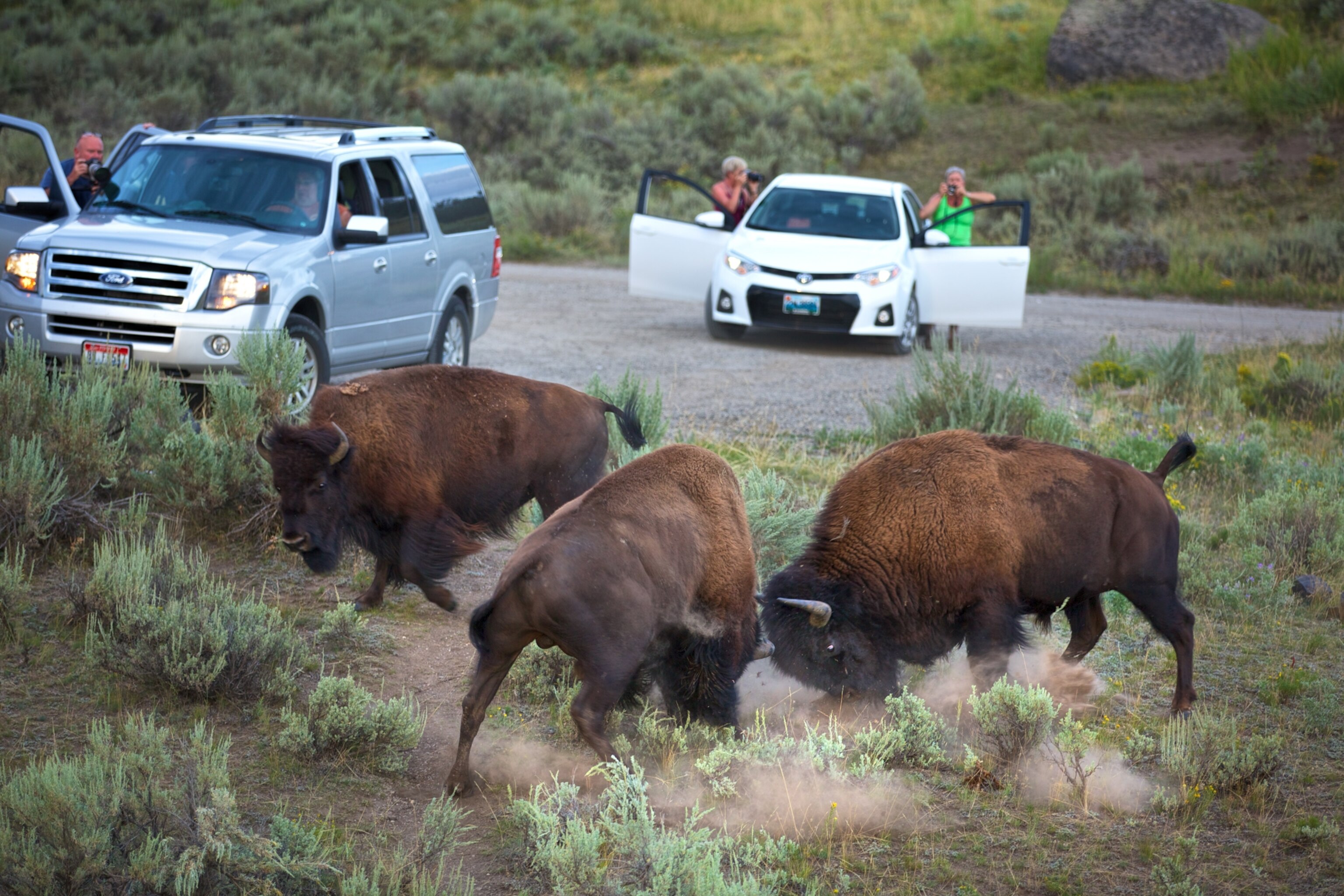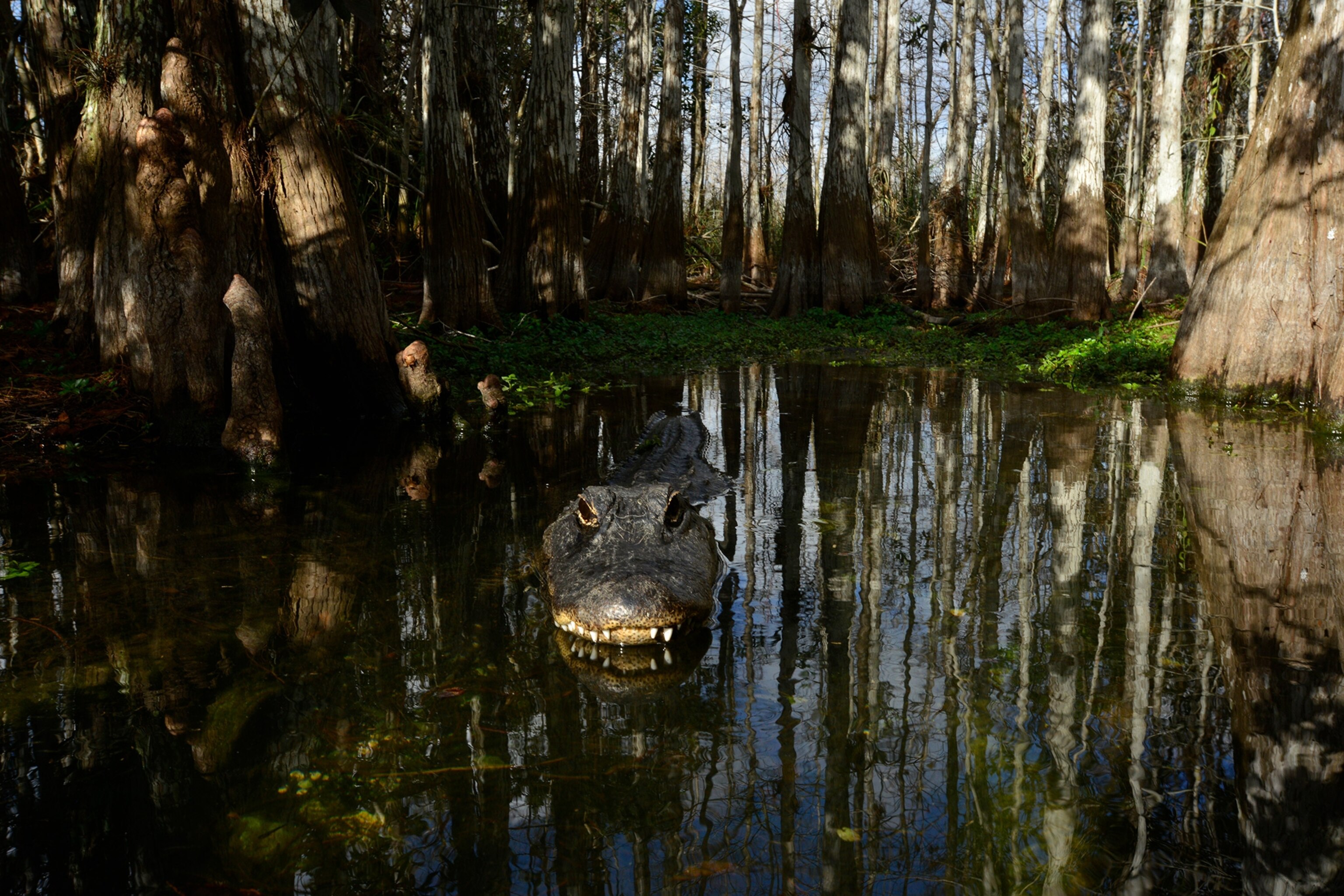With summer being the busiest season for most U.S. national parks, the potential for run-ins with wildlife increases—and so do visits to the emergency room.
Though most people imagine bears or bison are the animals to watch out for, even small mammals can pose a risk.
“At the Grand Canyon, the number one reason people end up at the clinic is from squirrel bites,” says Kathy Kupper, a spokesperson for the U.S. National Park Service.
It’s illegal to approach, harass, or feed any type of wildlife in national parks, adds Kupper. “No matter the size, no matter how harmless or safe they appear.”
Between 2008 and 2015 in the United States, 1,160 people died in animal encounters, mostly due to domestic animals such as dogs, followed by venomous species such as hornets, bees, and snakes.
Though such incidents are rare, they can be made even rarer by following a few basic guidelines. The first and perhaps most important is to give wildlife a lot of room.
“If your actions cause a reaction from the animal, then you’re too close,” says Kupper. “And if you can take a selfie with wildlife, then you’re definitely too close.” (Why people risk their lives for the ultimate animal selfie.)

Know before you go
Many problems with wildlife can be solved simply by doing a little bit of research before entering an unfamiliar area.
For instance, the American alligator, which can be found from South Carolina to Florida to Texas, can reach up to 15 feet long and weigh around a thousand pounds. These apex predators are capable of inflicting great bodily harm to their prey, and they have been known to kill humans from time to time.
It may seem obvious, but don’t approach an alligator or get in the water with one. Certain behaviors, like splashing at the water’s edge, are also a no-no for this particular animal, says Rolf Olson, project leader for the Arthur R. Marshall Loxahatchee National Wildlife Refuge in Florida.
“You can be within 10 to 15 feet as long as you’re up on dry ground,” Olson says. “Alligators can charge really fast and move really quickly, but they’re most dangerous in water.”

Predators are also not the only animals that should be given a wide berth: Large herbivores like bison and hippos can be just as deadly. In Alaska, more people are injured by moose than bears each year. Bison, which may look slow-moving, are unpredictable and can charge in an instant. They're capable of running up to 35 miles an hour and changing directions with more speed and agility than a horse. (Read why a bison attacked a tourist in Yellowstone National Park.)
In general, Kupper says remaining at least a hundred yards away from large animals like bears, wolves, and cats. For other wildlife, 25 yards is usually a good buffer.
Please don’t feed the animals
In addition to knowing your surroundings and keeping a distance, one of the best things you can do to prevent negative wildlife encounters is to keep your food to yourself.
This is because when animals come to associate humans with food, it can create situations that put both parties at risk. (See National Geographic's tips for photographing wildlife.)
In fact, Kupper says even small mammals with a taste for human food can be surprisingly harmful. (Here’s how to get kids to respect wildlife.)
A fed bear is a dead bear
Of course, larger animals can do even more damage, which is why Olson, of the Florida refuge, says he and his team work tirelessly to keep people from feeding the alligators.
“People have brought filet mignon down here,” he says.
Food-habituated animals sometimes have to be trapped, relocated, or euthanized by wildlife managers because of the threat they pose to humans. This is why those in the know say “A fed bear is a dead bear.”
Black bears have an incredible sense of smell, and will easily track down any human food that's left out or improperly stored. Not only are bears habituated to people more dangerous, they have shorter life-spans than bears that steer clear of us. (Here’s how to do wildlife tourism right and how to avoid negative interactions with bears.)
In the end, Kupper says that we need to remember that seeing wildlife is a privilege.
“You’re in their home,” she says. “We all need to do our part to make sure that they are safe so that others can enjoy them as well.”






